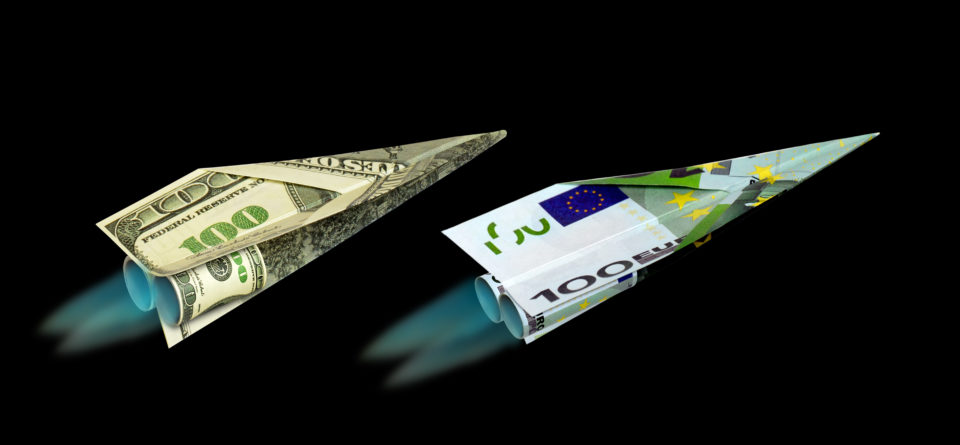Rising commodity prices could lead to fears of an uncontrollable inflationary surge that would signal the end of accommodating fiscal and monetary policies. But central banks are holding firm and continuing to support the economy. How far? Until when?
The disconfined France is back in the stores. Businesses’ order books are filling up, the economy is firing on all cylinders. At this rate, the air pocket that growth experienced in 2020 should be erased by the end of the year.
But already, signs of a boom are appearing. Commodity prices are soaring and supply problems are multiplying. The inflation rate is accelerating. In August it reached 3% in the euro zone, its highest level in ten years, while in the United States it stabilized at 5.3%, the highest since 2008.
Will the window of opportunity close for French companies? Not so sure.
Prices are rising, warning signs of a shortage are beginning to appear
After the Covid shock, here comes the raw materials shock. Oil, semi-conductors, timber, paper pulp, ores, metals or agricultural commodities, polymers, packaging board, cast iron or cement: the sharp rise in global demand in the first half of the year has caused prices to explode on all markets.
It is difficult to escape shortages, and entire sectors are being put to the test. In the construction industry, demand for wood, steel, PVC, foam and plaster is so high that suppliers are struggling to produce. In the automotive industry, shortages of semi-conductors, metals and plastics have led to assembly lines being shut down.
Bottlenecks and container shortages
These supply problems can be explained in part by the gigantic stimulus plans launched by China and the United States after the crisis. From the beginning of the year, the two powers reacted by entering a race for global stocks, while European countries were slow to agree on a continent-wide recovery plan.
And it was only in August that France received the first windfall of 5.1 billion euros out of a total of 39.4 billion to overcome the effects of the pandemic. These are precious months that French retailers will have missed.
At the same time, the shortage of containers has hampered the recovery of trade. Today, the price of a 40-foot container between Asia and northern Europe is close to 15,000 dollars, compared to 2,000 dollars in November 2020! Bottlenecks have formed in saturated ports, such as Long Island in the United States and Rotterdam in the Netherlands, sometimes causing delivery delays of several weeks.
Businesses are sitting back and absorbing the shock
In such a context, the risk is that the overheating of raw materials will be transmitted to consumer goods, which could jeopardize the recovery.
The situation is in the hands of companies, caught between the obligation to repay the “whatever it takes” debt and supply stress. Will they cut their margins or pass on price increases to their customers?
It is certainly difficult to absorb the additional costs of food, transport, energy and packaging all at once. At the beginning of September, Michel Edouard Leclerc did not have strong enough words against his suppliers, who were accused of taking advantage of the crisis to inflate their selling prices by 10 to 15%.
But on the whole, the French leaders are keeping their heads down. According to a survey carried out by Crédit Mutuel Nord Europe, 59% of small and medium-sized French companies, particularly in the construction and public works sector, have chosen not to pass on the rise in raw material prices in order to remain competitive.
Moreover, there is no evidence that large companies are behaving like the American food majors Coca-Cola, Unilever or Procter & Gamble, which have not hesitated to use their pricing power to impose their law on the market.
Central banks stay the course and continue to support the economy
Inflation can be positive when it is controlled. And, although some orthodox economists worry about it, the current situation is in no way comparable to the uncontrollable “Great Inflation” of the 1970s.
The proof is that the central banks, which have the power to regulate inflation, have decided instead to maintain their accommodating policies. Indeed, neither the ECB nor the Fed in the United States is considering an early end to the fiscal and monetary support measures linked to the pandemic. In Europe, asset purchases, although slowed down, should continue until spring 2022.
Thus, the current situation should not be viewed solely in terms of rising prices. For executives, the development of 2022 budgets will need to take into account these fiscal and monetary policies that are impacting the markets and smoothing the economy. For the first time in a long time, corporate budgeting processes will be influenced by central bank communications and the impact of government financing caught between inflation and debt collapse.
This September does not mark the end of the COVID crisis effect with a return to 2019-like activity, but rather the beginning of a new era where the decisions of both public and private decision-makers have never been so interdependent.
